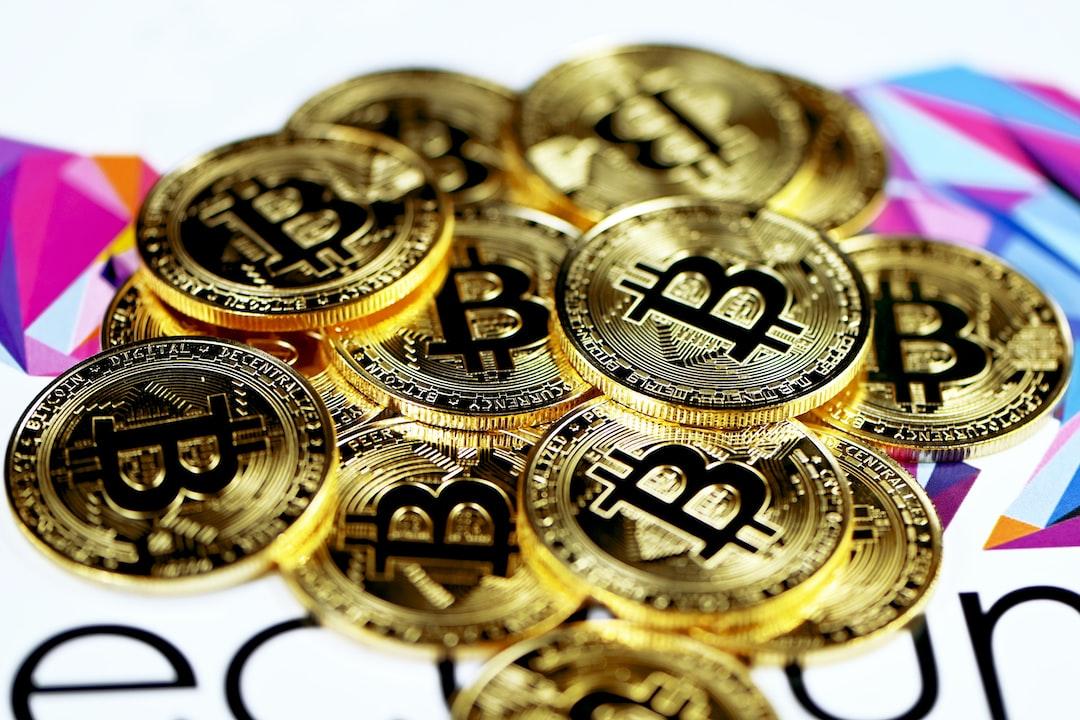U.S. Stocks: CRCL’s IPO Has Increased Fourfold; Arthur Hayes Warns of Overvaluation and Recommends Switching to This Asset.
Circle’s Listing Price Rises from $31 to $151
Circle’s listing price was $31 and has now reached a price level of $151. BitMex founder Arthur Hayes pointed out on his personal blog that the valuation of the American stablecoin concept stock Circle is excessively high after its IPO. However, he also warned against shorting CRCL, suggesting it would be better to buy Coinbase stock indirectly, as Circle has a 50% interest income share agreement with Coinbase in exchange for adoption rates. He also reviewed the history of stablecoins, analyzing why investing in new stablecoin issuers often leads to total losses for investors.
Bitfinex Develops Tether, the Beginning of Stablecoins
Arthur Hayes first explores the past of stablecoins. When he first purchased Bitcoin in 2013, transactions were still made using cash or bank transfers to buy Bitcoin. From 2014 to 2019, Bitfinex was the largest cryptocurrency exchange outside of China, and Bitfinex and Tether are actually backed by the same group of people. In 2015, Tether developed Tether USD, and Bitfinex allowed the use of USDT on its platform.
Like all payment systems, stablecoins only become valuable when a large number of economically influential participants become network nodes (network effects). In the case of Tether, apart from Bitfinex, cryptocurrency traders and other major exchanges needed to use USDT to resolve problems. At the same time, the Chinese also faced the same dilemma. Banks were shutting down accounts for traders and exchanges while also imposing foreign exchange controls. The digital dollar USDT, which anyone with internet access could use, became highly attractive.


Tether Rides the ICO Boom and RMB Depreciation, Becoming the Main Character in Capital Flight
At the same time, the market structure underwent a significant change. In 2017, during the peak of the ICO boom, Tether solidified its product-market fit. August 2015 was a crucial month as the People’s Bank of China made a shocking depreciation of the RMB against the US dollar. Ethereum also began trading around this time. Developments on both macro and micro levels facilitated the bull market in December 2017, with Bitcoin skyrocketing from $135 to $20,000, and Ether rising from $0.33 to $1,410.
The shocking depreciation of the RMB intensified capital flight, with large amounts of RMB exchanged for dollars, cryptocurrencies, gold, foreign properties, and so on. By August 2015, Bitcoin’s price had plummeted from its historical high of $1,300 before the Mt. Gox bankruptcy in February 2014 to a low of $135 at Bitfinex that month. The argument for capital flight from China sparked a surge in Bitcoin prices, with the Bitcoin/USD trading pair increasing more than twofold from August to October 2015.
Taiwan Once the Cryptocurrency Banking Center
With the rise of altcoins after Ethereum, USDT provided the perfect medium for trading exchanges like Poloniex that dealt in altcoins. These exchanges did not need to have connections with banks, as they could use USDT as a trading medium. After the Ethereum mainnet was launched, USDT could circulate using the ERC-20 token standard. Any exchange supporting Ethereum could also support USDT. Therefore, pure cryptocurrency trading platforms could offer altcoin/USDT trading pairs to meet market demand.
From 2015 to 2017, Tether achieved product-market fit and built its moat. Due to the trust of the Chinese trading community in Tether, USDT gradually gained acceptance across all mainstream trading platforms. At that time, USDT was not used for payments but was the most effective means of moving in and out of the cryptocurrency capital market.
Later, exchanges encountered enormous difficulties in maintaining bank accounts. Taiwan became the de facto banking center for cryptocurrencies for all major non-Western exchanges because some Taiwanese banks allowed exchanges to open dollar accounts and maintained agency relationships with large banks in the US. However, as the agency banks demanded these Taiwanese banks expel all cryptocurrency clients, USDT became the only means for massive dollar liquidity in the cryptocurrency capital market.
Stablecoins Are Unstoppable, Traditional Giants Begin Considering Their Use
Many Western players wanted to become competitors to Tether. The only company that survived is Circle’s USDC. However, Circle’s disadvantages are apparent, as it is an American company with no connection to the core of cryptocurrency trading and usage in Greater China. In 2019, Facebook (now Meta) decided to launch its stablecoin Libra. The appeal of Libra lies in Facebook’s ability to serve global users outside of China via Instagram and WhatsApp.
Libra could put commercial banks and central banks in a difficult position. It could diminish their roles, relegating central banks and traditional banks to regulated digital fiat currency warehouses. This is precisely what these institutions are bound to encounter in the digital age. As a result, American policymakers began to take action to protect traditional banks in the payment and foreign exchange sectors. However, these measures have already passed; Trump 2.0 has no fondness for the banks that closed the accounts of him and his family during Biden’s administration. Social media platforms Meta, X, Airbnb, Google, Amazon, and Walmart are all considering stablecoins.
(Wall Street Journal: Amazon and Walmart plan to issue their own stablecoins)
Arthur Hayes stated that banks cannot continue to earn billions of dollars annually through holding and transferring digital currencies. He recently discussed stablecoins with a board member of a major bank, who believes that stablecoins are unstoppable. Take Nigeria as an example: even when the Central Bank of Nigeria is seriously trying to ban cryptocurrencies, the settlement amount of USDT in Nigeria still accounts for one-third of its GDP.
Tether Has Established Its Usage Moat
The profitability of stablecoin issuers depends on the amount of their net interest income (NIM). The issuer’s cost is the fees paid to holders, while income comes from cash investment returns on Treasury bonds (e.g., Tether and Circle) or some form of arbitrage in the cryptocurrency market, such as fee arbitrage (Ethena). The most profitable issuer, Tether, does not pay any fees to USDT holders but earns all NIM based on the yield levels of Treasury bills (T-bills).
Tether is able to maintain its net earnings due to having the strongest network effects, and its customers have no choice but to use it besides dollar bank accounts. Potential customers will not choose other dollar stablecoins besides USDT, as USDT is accepted throughout the Southern Hemisphere.
Arthur Hayes spends a few weeks every year skiing in rural Argentina. When he first visited Argentina in 2018, it was troublesome to make payments if merchants did not accept foreign credit cards. However, by 2023, tour guides, drivers, and chefs were all accepting USDT payments. In contrast, bank ATMs only allow withdrawals of up to $30 worth of pesos per transaction and charge a 30% fee.
New Stablecoin Projects Often Distribute Earnings to Users for Adoption Rates
Unless your stablecoin is owned by exchanges, social media companies, or traditional banks, the cost of issuing a stablecoin can be very high. Bitfinex has millions of customers, so Tether had millions of customers from the start. Circle and any subsequent stablecoins must find ways to distribute their stablecoins; social media companies and banks will never cooperate with third parties, making cryptocurrency exchanges the only option.
Cryptocurrency exchanges can create their own stablecoins, just as Binance attempted to launch BUSD, but most exchanges believe that establishing a payment network would distract them from their core business. Coinbase is the only major exchange that does not cooperate with Tether, as Coinbase’s customers are primarily Americans and Western Europeans, while Tether has been portrayed as a scam by Western media. Regarding the details of their cooperation, Arthur Hayes revealed that Circle pays 50% of its net interest income to Coinbase.
The situation for new stablecoin issuers is extremely difficult. They lack distribution channels. New issuers must distribute a large amount of net income (NIM) to depositors in order to draw users away from other higher adoption stablecoins. This is why investing in new stablecoin projects often leads to total financial ruin for investors.
How to Face Circle’s Overvaluation? Arthur Hayes Suggests Buying Coinbase
As for how stablecoins will develop in the future, U.S. Treasury officials believe the AUC (total issuance) of stablecoins could grow to $2 trillion. Essentially, stablecoin issuers are price-insensitive buyers of U.S. Treasury bonds. Do not forget that Trump harbors deep resentment toward large banks, as these banks closed his and his family’s bank accounts after his first presidential term.
(Is the Trump family being blacklisted by traditional banks? Eric Trump criticizes that blockchain will eliminate them, and crypto is the future)
In terms of AUC, Circle is the second-largest stablecoin issuer globally. However, Arthur Hayes pointed out that Circle’s current valuation is severely overestimated. It is important to note that Circle gives 50% of its interest income to Coinbase. However, Circle’s market value is only 39% of Coinbase’s. Nevertheless, Arthur Hayes also warned against shorting Circle. If you believe the ratio between Circle and Coinbase is incorrect, perhaps you should buy Coinbase instead.
The next wave of listings will be imitators of Circle. Relatively speaking, these stocks will have a higher price-to-earnings ratio than Circle’s valuation. In absolute terms, their revenue will never surpass Circle’s. Promoters will tout meaningless TradFi qualifications, attempting to convince investors that they have enough connections and capabilities to disrupt the global dollar payment landscape through collaboration with traditional banks or by leveraging their distribution channels.
Risk Warning
Investing in cryptocurrencies is highly risky, with prices potentially fluctuating dramatically, and you may lose your entire principal. Please assess the risks carefully.
